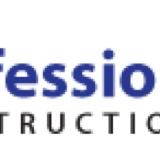Title Page
-
Site conducted
-
Project Title
-
Project No.
-
Contractor
-
Client
Scope of Work
Project Statement
-
Begin by knowing why the construction project was initiated in the first place and what exactly the client wants to achieve when it is completed.
Scope of Work
-
List the client's deliverables using the S.M.A.R.T. criteria. In each deliverable, you can identify a responsible person, the cost, and target date of completion. You may also attach supporting documents (.e.g floor plan, design plan, Work Breakdown Structure) fas additional references. Craft a glossary/definition of terms to help prevent miscommunication and disputes down the line.
-
Scope of Work Statement
-
Glossary/Definition of Terms
-
Attach supporting document/s (Optional)
-
List the deliverables needed to accomplish the goal
Deliverable
-
Description
-
Costs
-
Responsible Person
-
Target Date
-
Attach supporting documents (Optional)
Project Schedule
-
Summarize your project's timeline here. Identify milestones (e.g. securing of local government's building permit, completion of procurement, 50% completion of project) to pinpoint critical events that lead to the project's completion. You can also attach visual guides, such as Gantt charts, boards, and roadmaps, to help everyone have a quick overview of the schedule.
-
Summary of Schedule
-
Attach supporting documents (Optional)
Project Costs
-
Projects often have a tendency of going over budget, making it more important for project managers to do a cost-benefit analysis beforehand. This can help you determine the right mix of resources (e.g. labor, machinery, safety facilities, and security) and the optimal price. Consult experts when preparing this section to get precise costing for manpower, tools and equipment, and other requirements.
-
Summary of Costs
Acceptance Criteria
-
Acceptance criteria is used to evaluate the deliverables - whether they are working fine according to the prescribed specifications.
-
Acceptance Criteria
Variations
-
Many construction projects eventually vary from the original design and specifications, which is why it's important to decide whether to allow or not these types of changes. The Variations section can address the process by which the parties will adhere to in case of change requests.
-
Variations
Conditions of the Contract
-
This is where you can include additional conditions that strengthen your SOW. You can specify details for items, such as workmanship, working hours, safety program, site clearance and cleaning procedures, warranty, and standard of performance.
-
Conditions of the Contract
Project Approval & Signatures
-
Never begin construction without securing critical signatures/approvals; these make your SOW enforceable. Project managers must get all key signatories to agree on each project objective and milestone before finalizing the SOW. This will help protect all parties in case of legal disputes. You may also add more signatories here in case there is more than one.
Client
-
Client Representative's Full Name and signature
-
Complete Address
-
Contact Details
-
Date Signed
-
Add signatory
Signatory
-
Additional Name and Signature
Contractor
-
Contractor's Representative's Full Name and signature
-
Job Title
-
Complete Office Address
-
Contact Details
-
Date Signed
-
Add signatory
Signatory
-
Additonal Name and Signature











